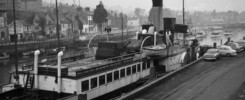
After the First World War several major infrastructure projects were completed around Weymouth Harbour including damming the River Wey with Westham Bridge, much infilling of, and new harbour walls for, the Backwater, a new lifting Town Bridge opened in 1930 plus a rebuilt Pleasure Pier which was completed by July 1933.
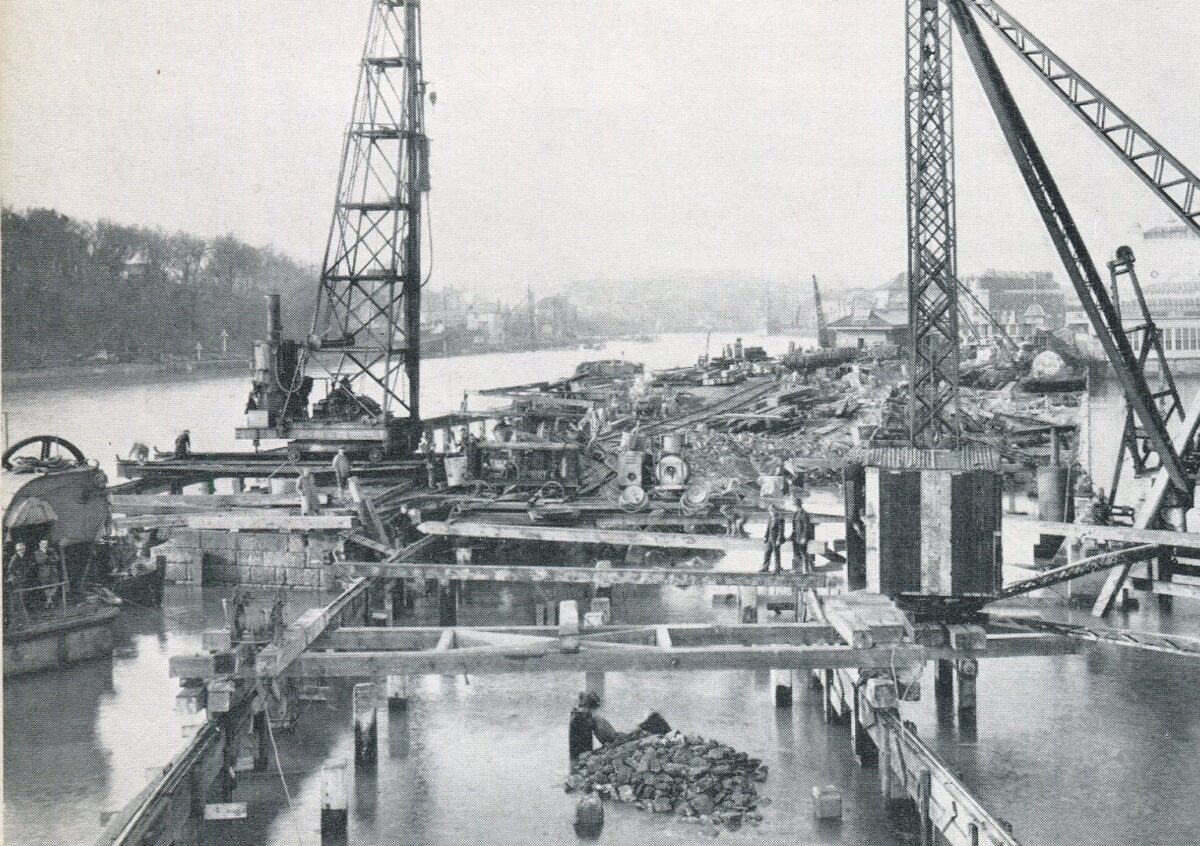
1934 was therefore the first full season of use for this wonderfully enhanced amenity with its three berths specially designed for both local and visiting paddle steamers. At that stage Cosens owned a fleet of five paddle steamers Emperor of India, Monarch, Victoria, Empress and Premier plus several 50 seater motor launches. The first two operated their seasons from Swanage and Bournemouth. The last three and the motor launches from Weymouth.
Let’s look at what the Weymouth based vessels were up to in the August Bank Holiday week Saturday August 4th to Sunday August 12th 1934.
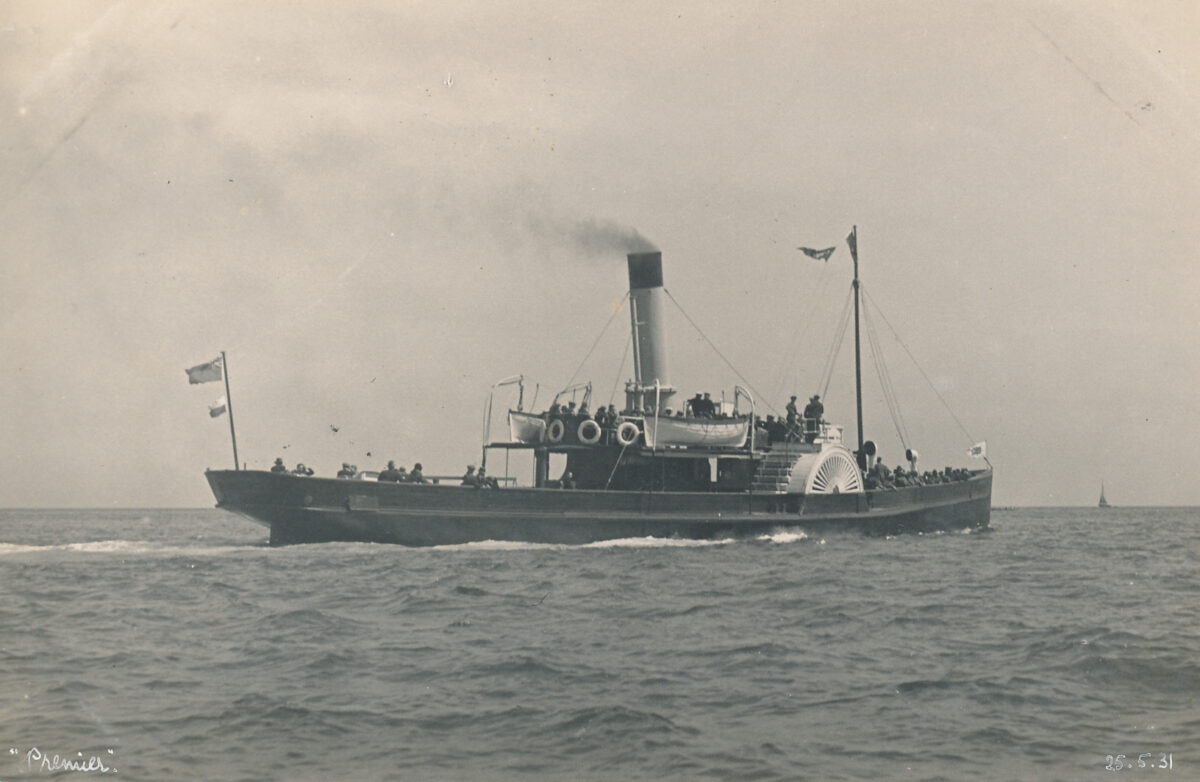
Premier and one or other of the motor launches ran a service between Weymouth and Castletown, Portland with the main timetable giving departures from Weymouth for the half hour trip at 10.30, 11.30, 1.45, 2.30, 3.30 & 4.30 returning at 11.0, 12 noon, 2.15, 3.0, 4.0 & 5.0. This ran every day except Sundays.
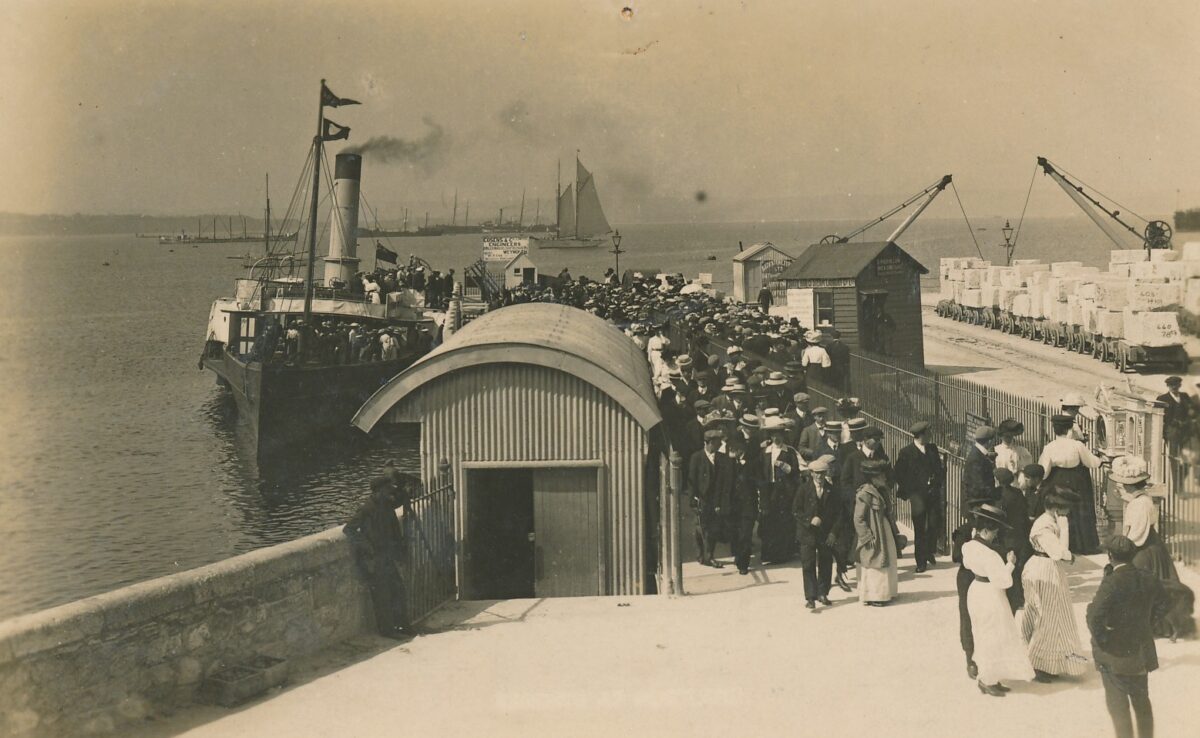
As part of this Premier ran a 2.30 “Steamer Trip Through Portland Harbour viewing the Warships, Submarines and Merchant Shipping or with the option of landing at Portland until 4pm due back 4.30pm” every day including Sundays but except Bank Holiday Monday August 6th when the the service was advertised to offer “Trips to Portland every half hour from 9am to 5.30pm” making much use of the motor launches as well as Premier.
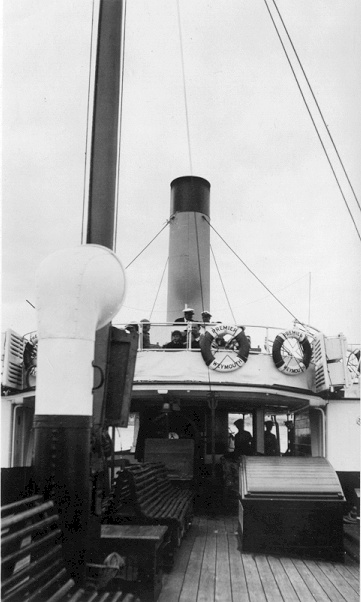
Premier also ran an 11.0 am “Steamer Trip Through Portland Harbour viewing the Warships, Submarines and Merchant Shipping or with the option of landing at Portland due back 12.30pm” on Bank Holiday Monday 6th, Tuesday 7th, Wednesday 8th, Thursday 9th and Friday 10th August.
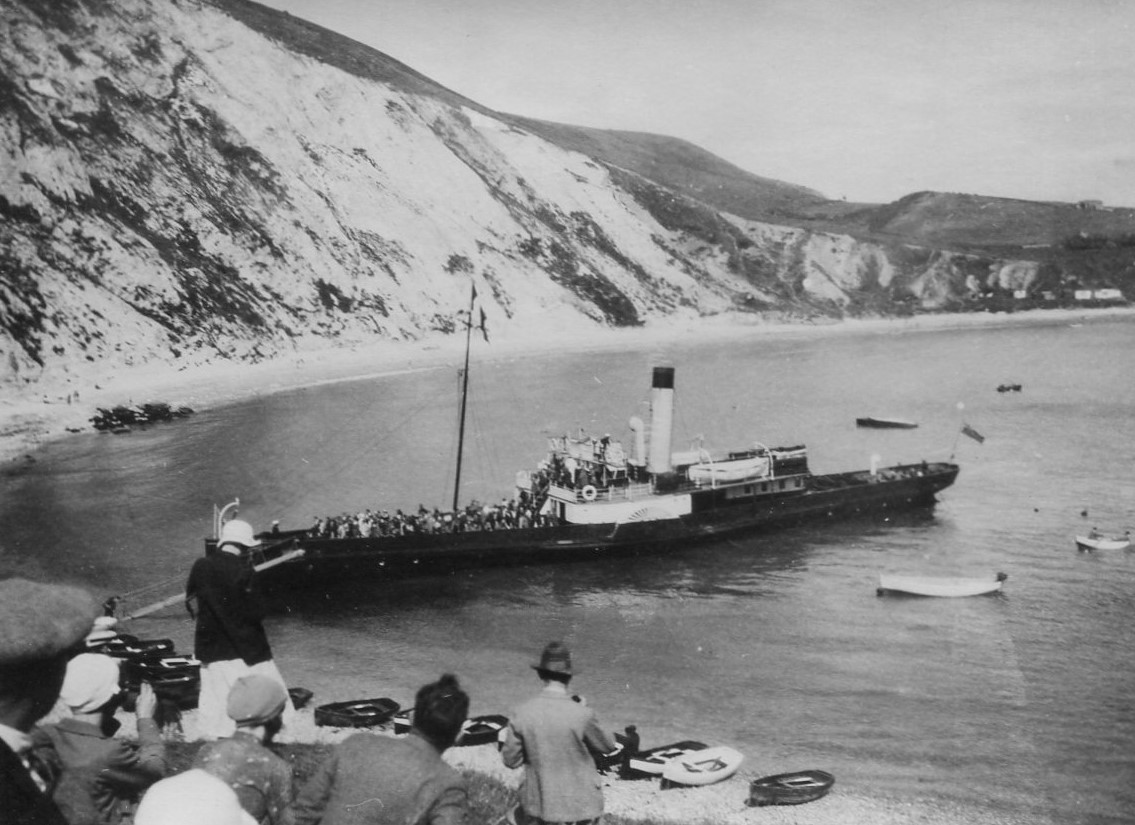
Empress ran two round trips, taking about one hour each way, to Lulworth Cove leaving Weymouth at 10.30am and 3pm returning at 11.30am due back 12.30pm or 5pm due back 6pm every day this week and on Sunday 5th, Monday 6th, Tuesday 7th, Wednesday 8th and Thursday 9th added an extra evening run leaving Weymouth at 6pm giving about 45 minutes ashore and due back 8.45pm. Passengers going out in the morning could stay aboard or return at 5pm or 7.45pm making a nice long day of it and also helping to spread the numbers returning over more than one sailing.
On Bank Holiday Monday August 6th the morning departure was at the earlier time of 10am so as to be able to squeeze in an extra Lulworth Cove round trip over the lunch period 12.15pm to 2.15pm. These Bank Holidays always packed the punters in with extra trips to cope for the additional demand. I remember in my childhood the vast queues stretching for ever down the Pleasure Pier waiting for Consul on these super busy Bank Holidays in the late 1950s.
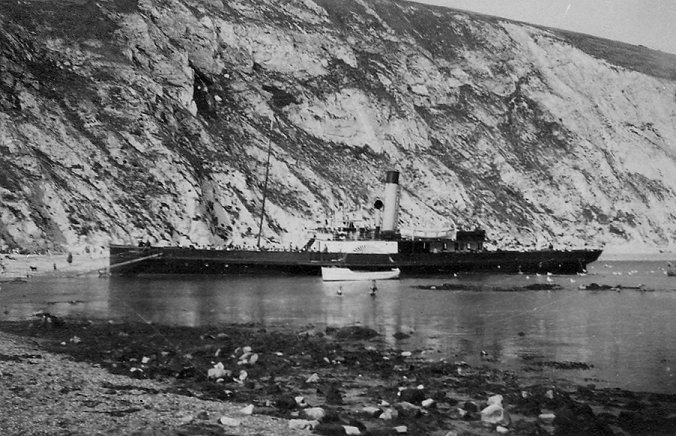
By that stage both Empress and Premier had Passenger Certificates which restricted their operation to a line joining Portland Bill and Lulworth Cove so it was Victoria which ran the longer day trips to more exotic locations.
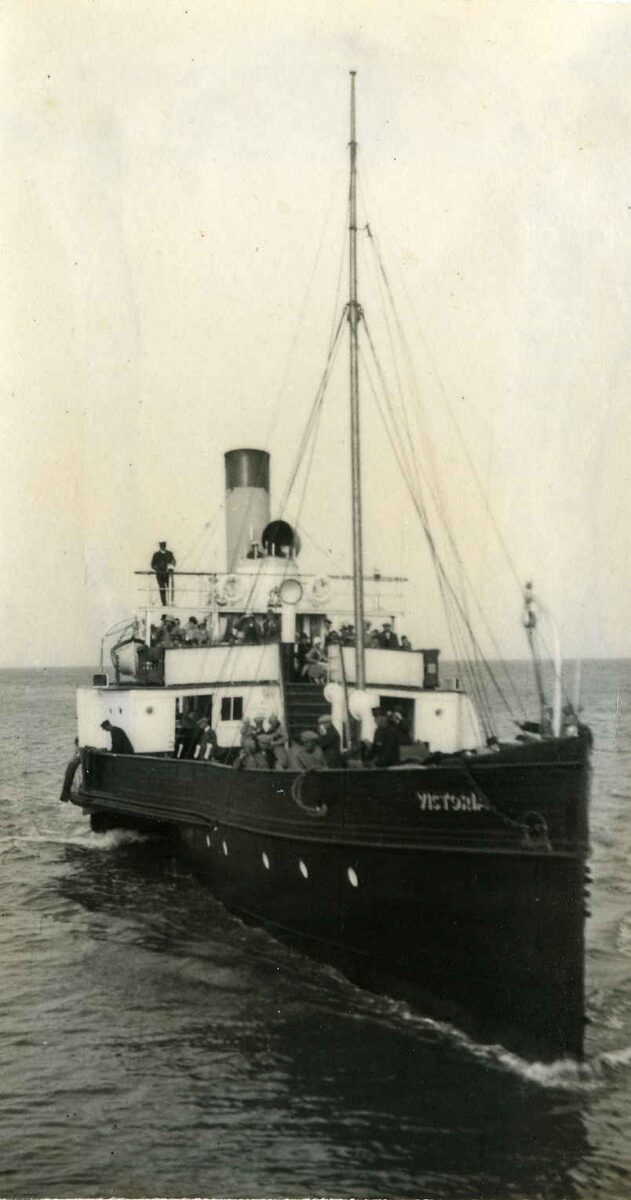
Victoria’s roster from Weymouth this week in August 1934 was:
Saturday August 4th:10am Swanage and Bournemouth returning from Bournemouth 5pm, Swanage 5.45pm home about 7.45pm
Sunday August 5th: 10am Cowes for Grand Assemblage of Yachts (HM The King at Cowes for the Regatta) giving about 2 hours ashore returning 4.30pm home about 9pm.
Bank Holiday Monday August 6th: 9.45am Special Cheap Day Trip to Bournemouth (Over 5 hours ashore) returning at 5.30pm home about 8.30m.
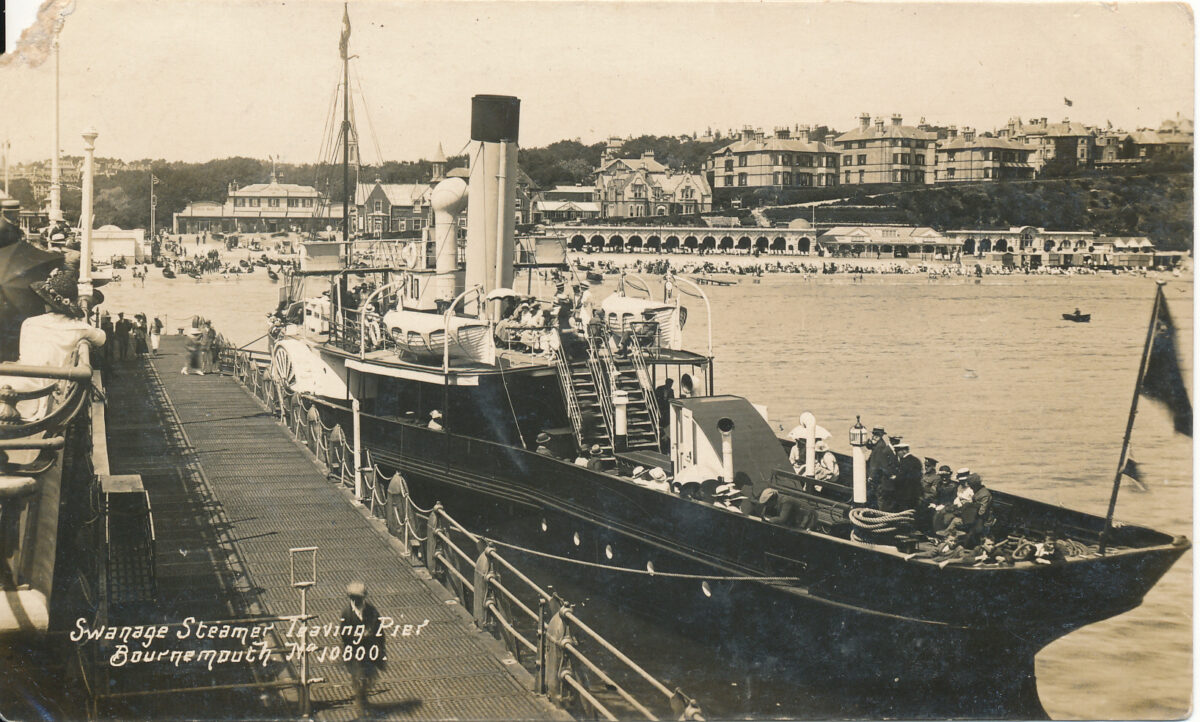
Tuesday August 7th: 10.15am Swanage and Bournemouth returning from Bournemouth 5pm, Swanage 5.45pm home about 7.45pm
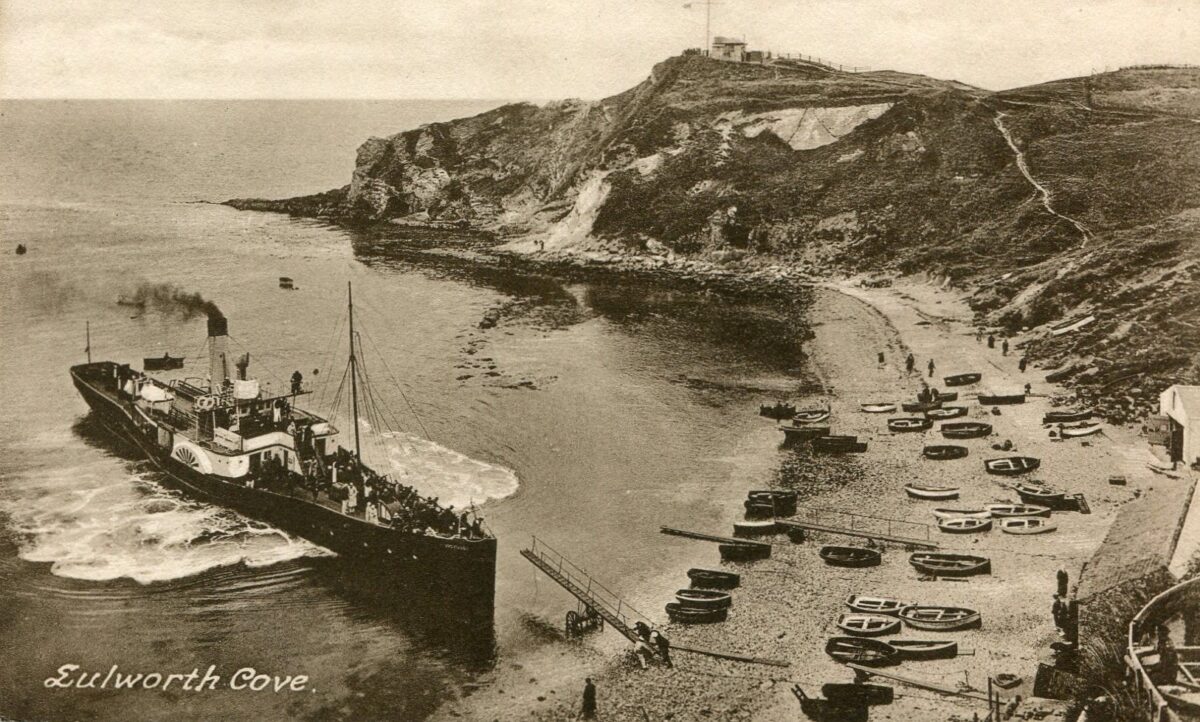
Wednesday August 8th: 9.15am Swanage and Bournemouth. Returning from Bournemouth 5.30pm, Swanage 6.15pm home about 8.15. NB Bournemouth passengers changed to the Monarch at Swanage. Her passengers from Bournemouth boarded Victoria for Lulworth Cove.
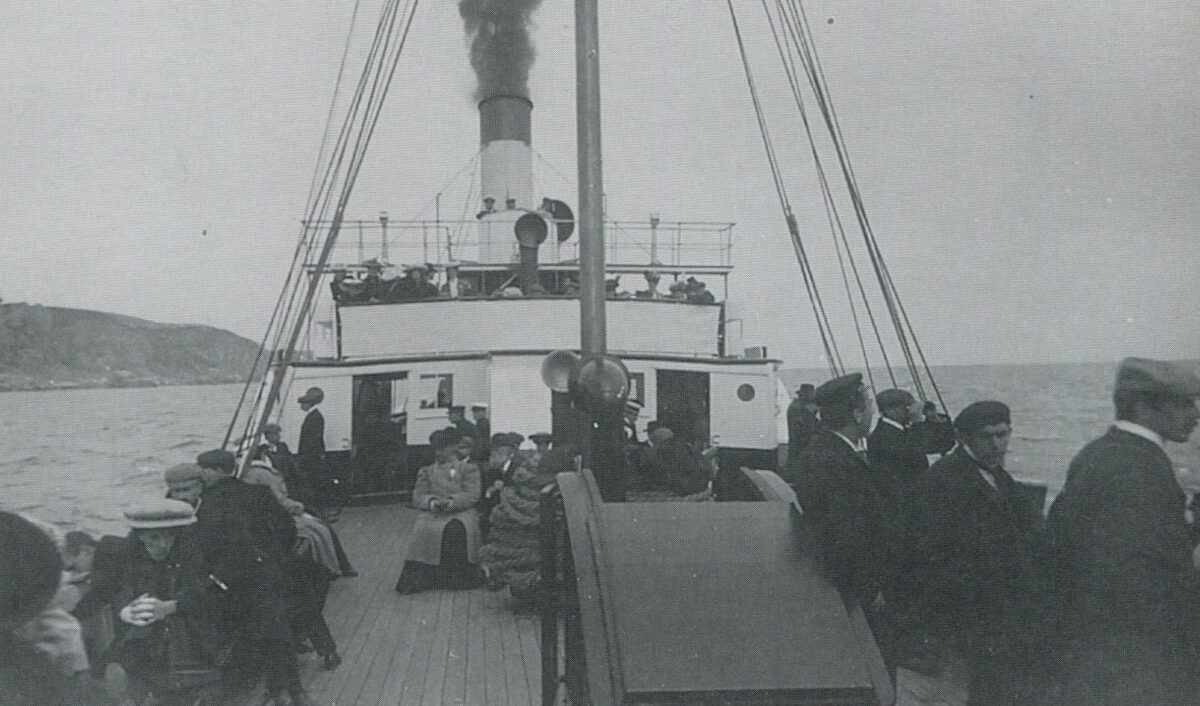
Thursday August 9th: 9.30am Torquay giving over 2 hours ashore returning 4.30pm home about 9pm

Friday August 10th: 10am Special Cheap Trip to Lyme Regis (The Pearl of Dorset) giving about 3 1/2 hours ashore returning 4.30pm home about 7.30pm
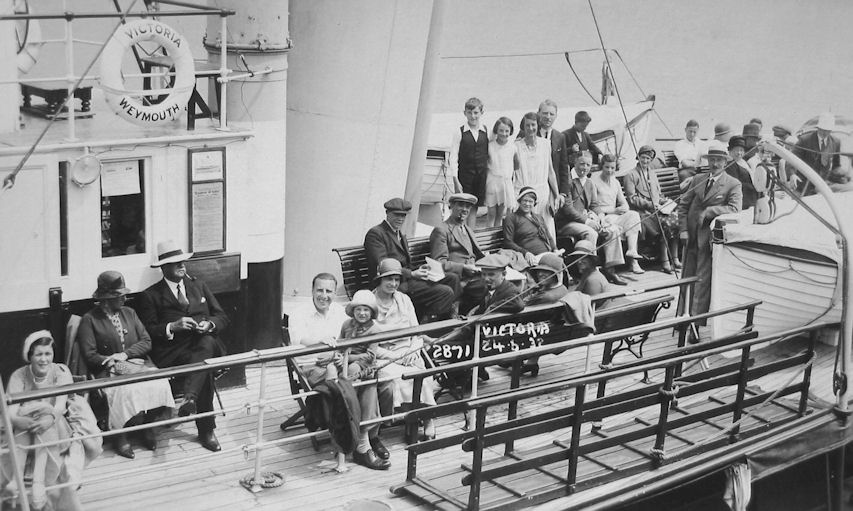
Saturday August 11th: 10am Swanage and Bournemouth (Bournemouth Regatta) returning from Bournemouth 5pm, Swanage 5.45pm hone about 7.45pm
Sunday August 12th: 10am Cowes giving about 2 hours ashore returning 4.30pm home about 9pm

In addition Cosens’ own Emperor of India and occasionally Monarch called at Weymouth roughly speaking once a week on day trips from Bournemouth and Swanage.
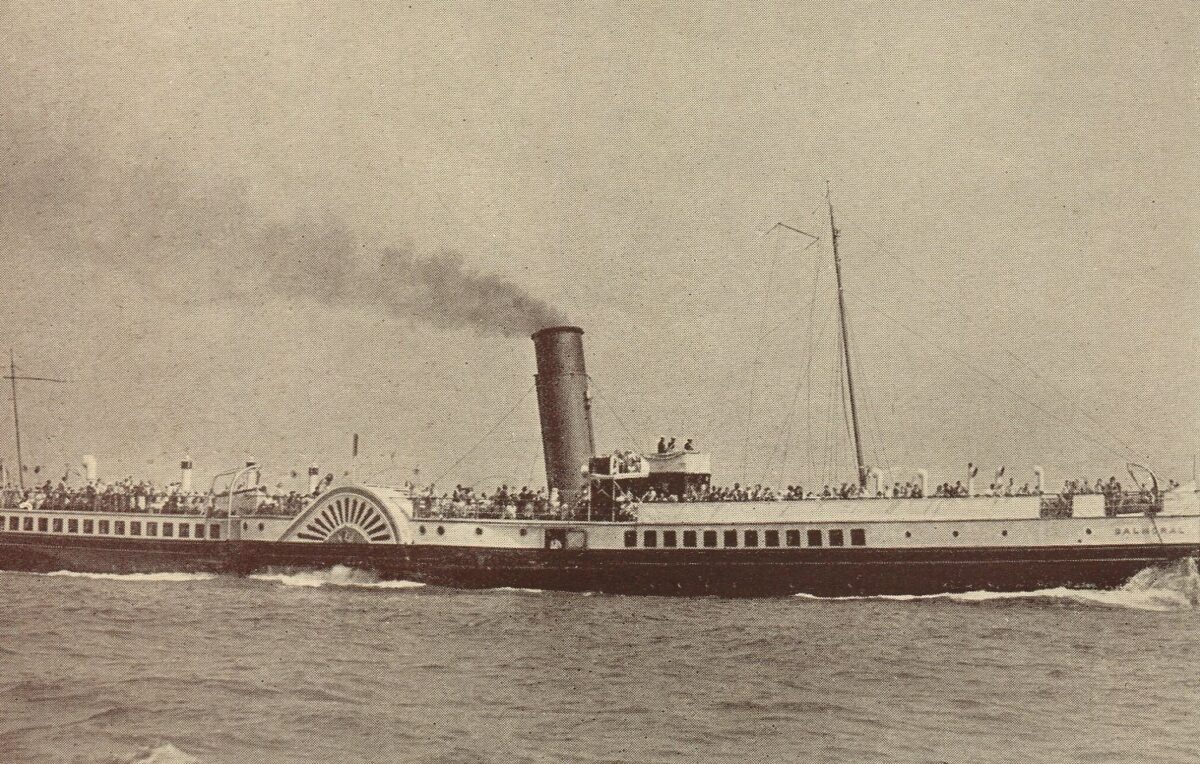
And Balmoral also called at Weymouth on occasional day trips from Southampton, Bournemouth and Swanage.
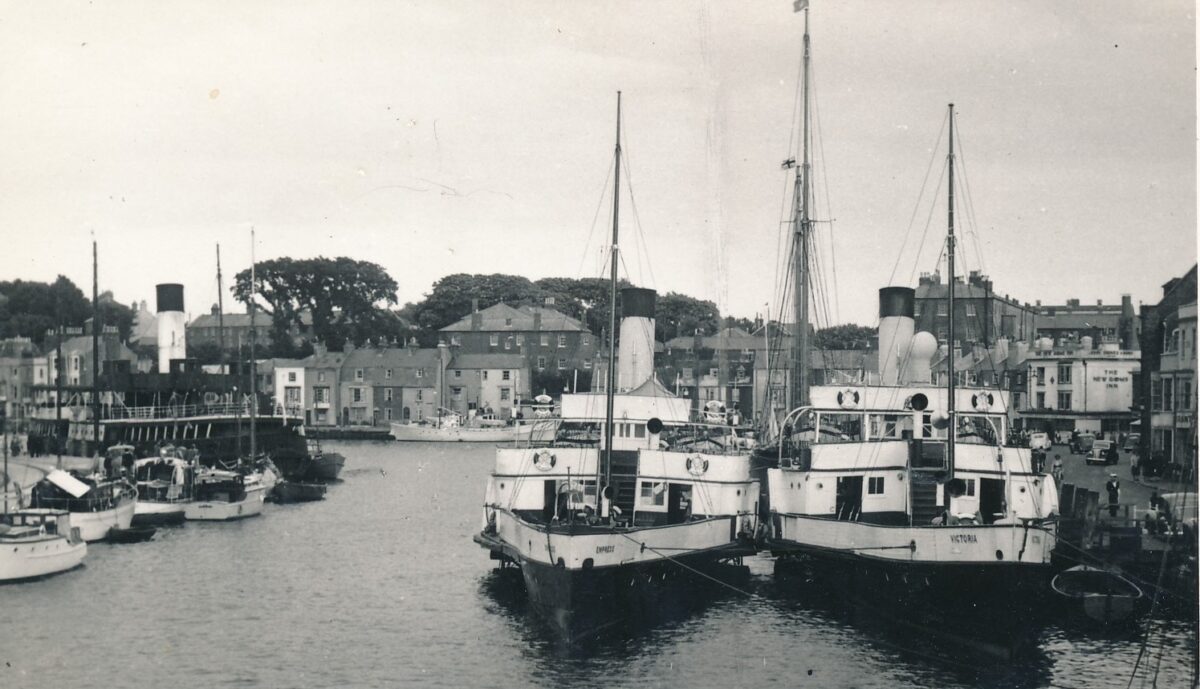
Emperor of India and Balmoral were a step up in terms of size and passenger amenity from the somewhat diminutive Premier, Empress and Victoria which served the Weymouth market. Yes, Victoria was a tiny tad bigger than Empress for more sea-going work for the day trips, as this picture from 1952 shows, but she was no Balmoral.
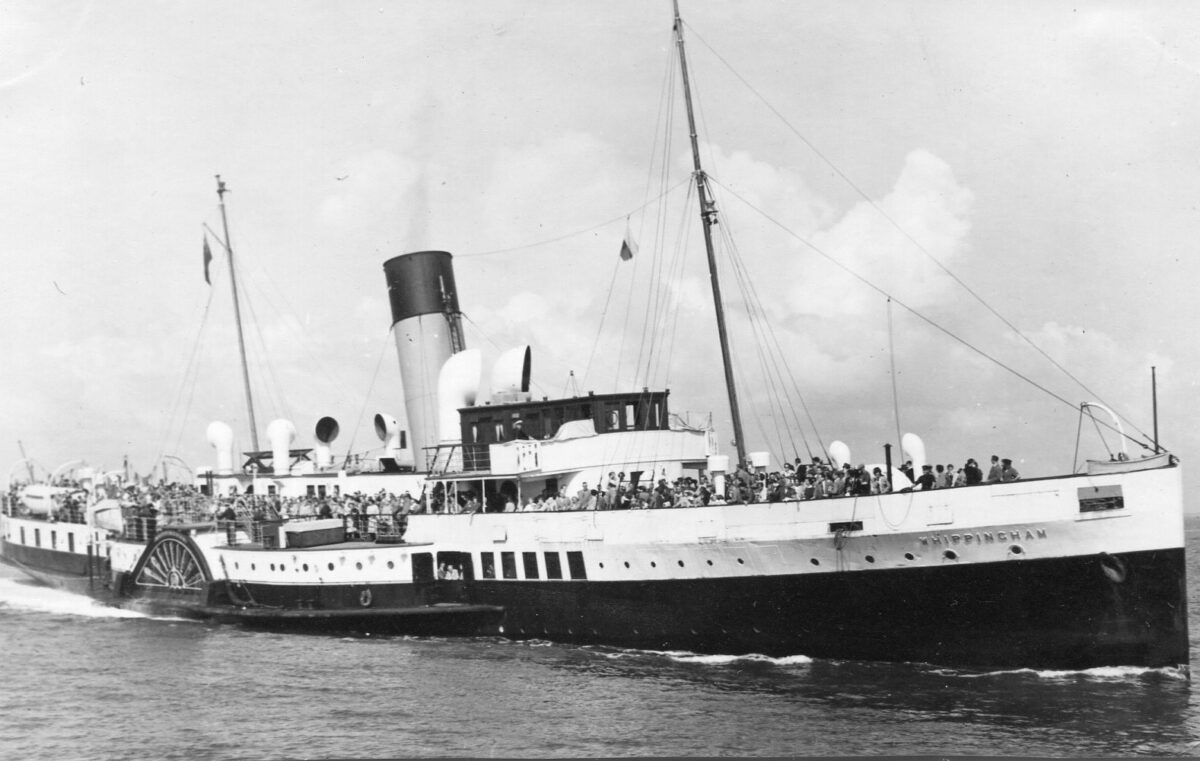
The 1930s was also an age when a number of super large and super modern paddle steamers were built around the UK. For example just along the coast at Portsmouth the Southern Railway built the Whippingham in 1931 as the first of four new builds in the 1930s to serve the very buoyant Isle of Wight market from Portsmouth, Southsea and the Isle of Wight piers at Ryde, Sandown, Shanklin and Ventnor.

In 1931 the GSN built the huge Royal Eagle to serve a large and more moneyed clientele for days out on the London River and continued to build three more ever larger excursion vessels to meet the demand as the decade wore on. Royal Eagle could carry more than 2,000 passengers.
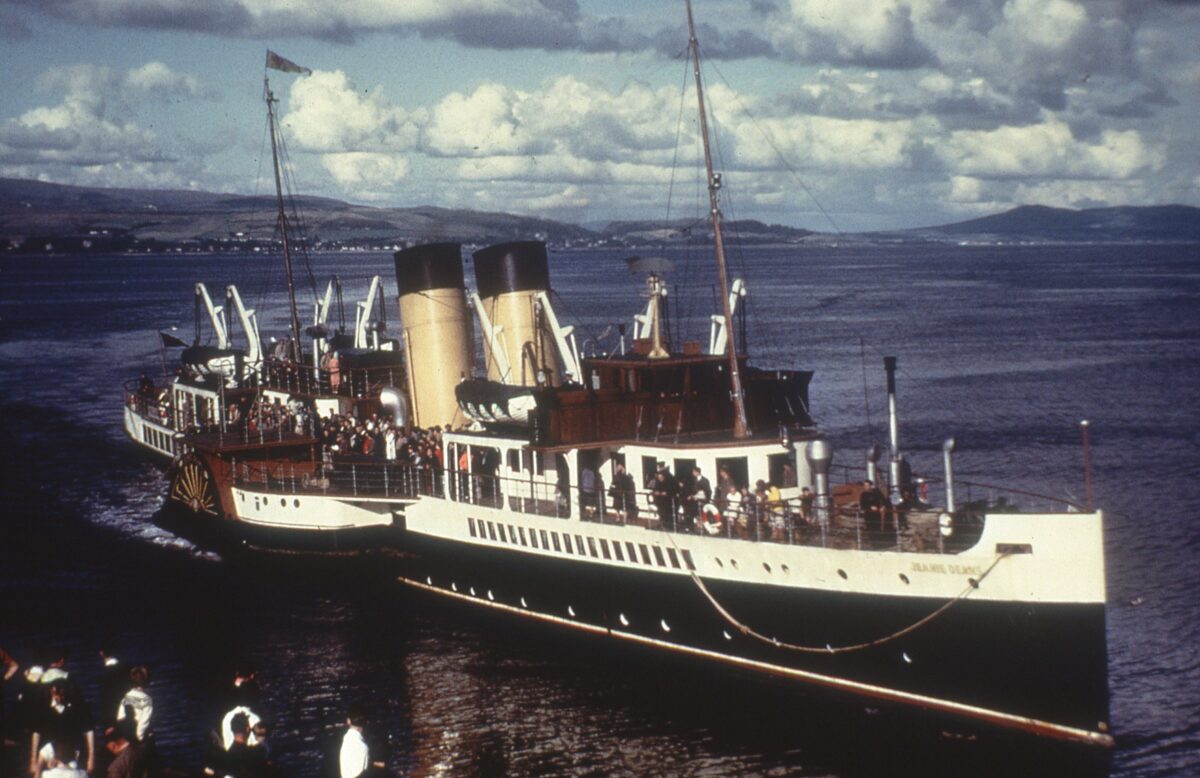
Jeanie Deans was built in 1931 as the first of four new and large paddlers for the Clyde services in the 1930s.
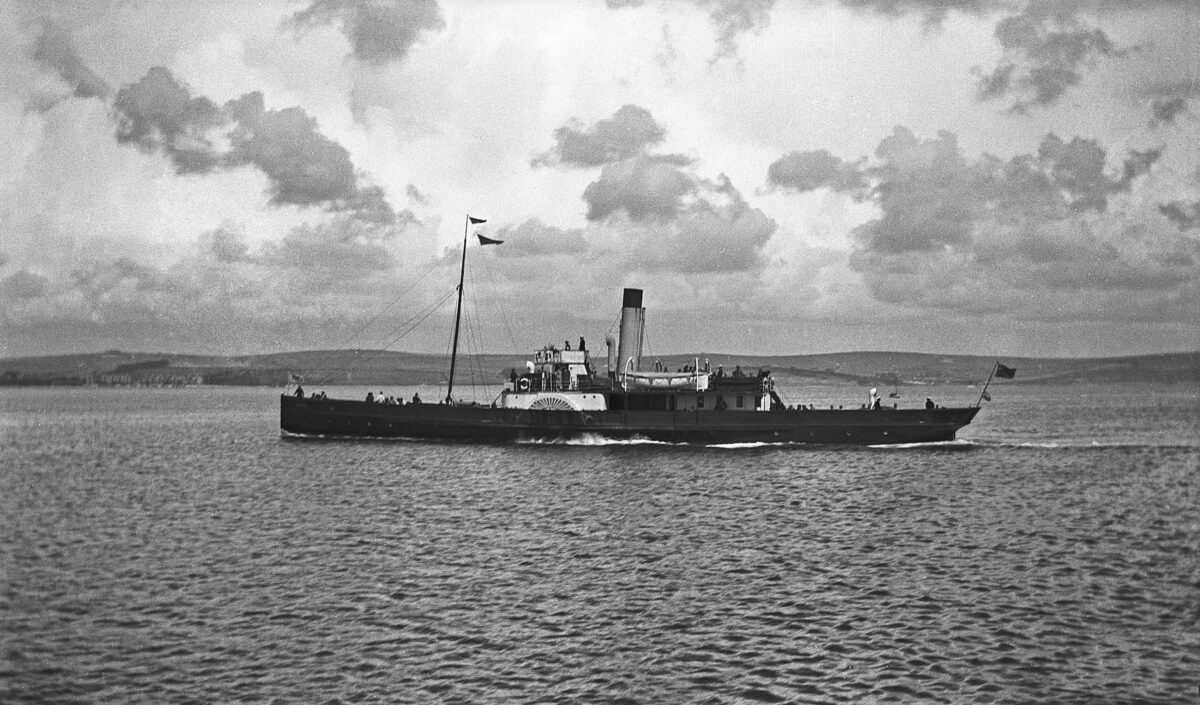
Contrast that with Weymouth in 1934 where there was business only to support three paddle steamers the size of Premier, Empress and Victoria. Why this difference? Why didn’t Weymouth have a market sufficient to support one or more of these new and larger beauties.
Well Weymouth is a lovely seaside town. I was born and grew up there. I love the town. It is never far from my thoughts. But although it is a fairly sizeable resort in its own right it is not that big. It is not surrounded by any industrial hinterland to provide a core base of potential regular paddle steamer punters over a longer season and it is rather at the end of the line. Starting from London you get to Portsmouth, Southampton or Bournemouth first. Getting from and two the West Country by rail was, and remains, not straightforward. And the line south from Bristol takes forever. In any case the closest largest urban conurbations like Bournemouth, Bristol and Southampton had their own paddle steamers running their own trips anyway.
Then there is the question of what market segments visited Weymouth and provided the core of passengers for Cosens in the 1930s. The town had been put on the seaside holiday map by the aristocracy and other wealthy individuals gravitating down to it from Bath in the middle to late 18C when its greater distance from London was then seen as a virtue. Three days by horse drawn coach gave it an away from it all sort of feel. The King’s brother became a regular. He encouraged the King to come as well and enjoy the lovely beach with its special sand and gentle tides. That put the seal on the town’s success. And so it went on until the arrival of the railway in 1857 when the visitor profile changed from the moneyed elite to the mass market with workers from the industrial hinterlands of South Wales and the Midlands arriving in droves.
In the peak weeks they filled the hotels. They filled the B & Bs and other digs. They packed the beach to beyond bursting. But they were not that well off. They had enough money for their modest week or maybe two away but they weren’t flush.
As a result Cosens fares for paddle steamer rides from Weymouth were generally proportionately cheaper than those from Swanage and Bournemouth which tended to attract a better off clientele. For example in 1960 a paddle steamer day trip from Weymouth to Bournemouth (6 hours steaming round trip) cost 10/6. A day trip from Bournemouth to Totland Bay, Isle of Wight (3 hours steaming round trip) was 16/-. I recall Capt Defrates telling me that when he was master of Consul in the late 1950s when he set off from Weymouth to Swanage and Bournemouth it was very obvious that there were loads of families aboard with the men of the house wearing Midlands style flat caps. Then at Swanage they would go ashore and were replaced by families with men in tweed sports jackets paying 7/6 for the hour and a half round trip to Bournemouth.
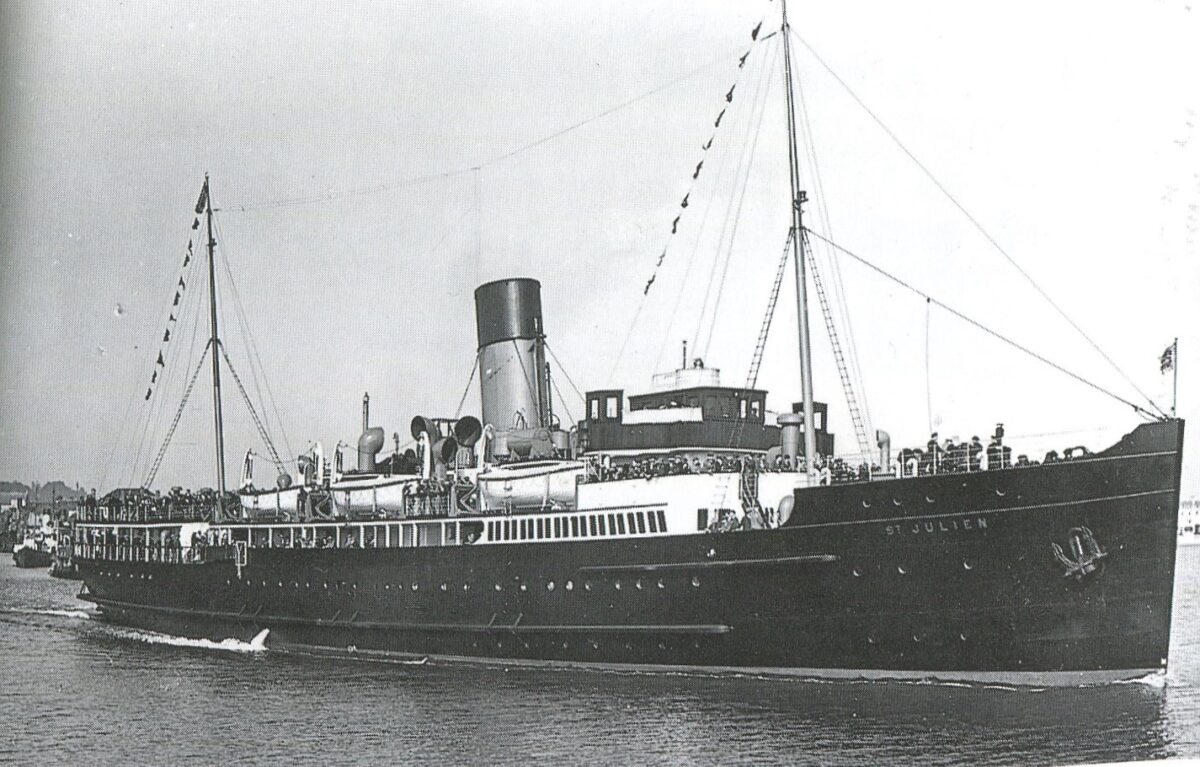
Of course there were some better off people still visiting Weymouth in the 1930s maybe staying for a higher price at the more upmarket Gloucester or Royal Hotels in prime positions on the esplanade. Although there were not that many of them I guess that some of them may have taken a trip on Premier, Empress or Victoria. But if they wanted to get afloat then there were other options including taking one of the GWR mail boats for a trip sort of going foreign to the Channel Islands or on one of the long coastal cruises they offered from Weymouth either eastwards towards Bournemouth or westwards into Lyme Bay in the down time between their crossings to Guernsey and Jersey. Contrast the standard of accommodation you would have enjoyed on the spartan and diminutive Victoria with the very well appointed St Helier and St Julien with their dining saloons panelled in mahogany and their first class bar in French walnut.
So in the 1930s there just wasn’t the business at Weymouth for any super large, super new paddle steamers more’s the pity.

There was another issue too. Not only were the Weymouth paddle steamers small. They were also distinctly elderly. Premier was built in 1846 so was almost ninety. Empress dated from 1878 so was almost sixty. And Victoria came out in 1884 and so was already fifty. Ships are built for a design life of 25/30 years. How come these Cosens’ paddle steamers were still going in 1934 decades after they might reasonably have been expected to be scrapped?
For that Cosens had their own formula. For all of us who travel on paddle steamers when they are in going condition it is easy to miss or forget all the structural work which goes on behind the scenes to keep them in service year on year in the winter when they are tucked away largely out of our sight. All the steelwork renewals, all the deck renewals, all the caulking, all the paddle box renewals, all the funnel and inner funnel renewals, all the mast removals and replacements, all the other woodwork renewals, removal of deckhouses, fitting of new deckhouses, replacement of parts of wooden bulwarks, all the pipework renewals, all the boiler repairs, all the engine bearing replacements and shaft realignments, the air pump diaphragm issues, replacement of the piston rings in all the pumps and having to rebore their cylinders from time to time and so on and on and on. All of this is an inevitable and necessary part of keeping a paddle steamer in service beyond the life for which she was designed.
Those with sharp eyes will already have spotted the significant and obvious differences between the Victoria in the 1901 picture above and the same Victoria in other later pictures in this post. That’s not counting all that you can’t see hidden away in the bilges, behind panelling and in the engine and boiler rooms.
Cosens had one up on many operators elsewhere for sorting this out in that they had their own ship repair business in Weymouth with their own staff of skilled workers in all the maritime fields who could do all these repairs and renewals at cost price. Their 1923 guidebook boasts: “The youth of Weymouth will have every reason to remember Cosens & Co as a stepping stone into the engineering world for many otherwise would have been barred from this privilege. Since the establishment of their engineering works numerous young fellows have been trained and, with few exceptions, have made good in their profession.”
And because Cosens did work for the Royal Navy at Portland they had to keep themselves up to date with the latest techniques. For example when electricity started to come in on ships in the 1880s Cosens had to learn all about this latest technology. As a result it was Cosens who brought electricity to Weymouth years before anyone else. They even set up their own electricity generating station supplying key individuals and businesses with their first electricity supply in the town.
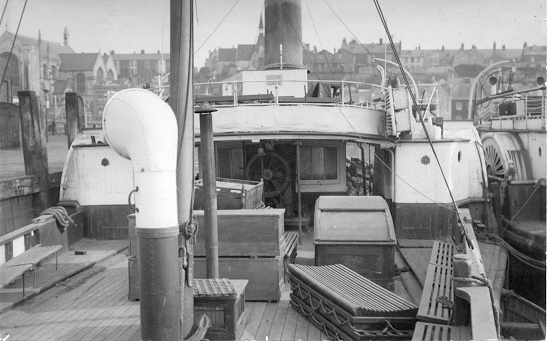
However even Cosens’ legendary ability to keep elderly tonnage in service well beyond their design life had its limits. By 1937 Premier was over ninety. And it was increasingly obvious that as the world moved on Victoria with her general lack of undercover accommodation was not an ideal long distance day boat. It is one thing to sit on deck for a one hour trip around Portland Harbour or for the one hour each way to Lulworth Cove but it is quite another for most passengers to have to brace the elements out in the open for nine or ten hours steaming sometimes well out to sea, and sometimes with a bit of rocking and rolling thrown in, on voyages between Weymouth, Swanage, Bournemouth, Cowes or Torquay.
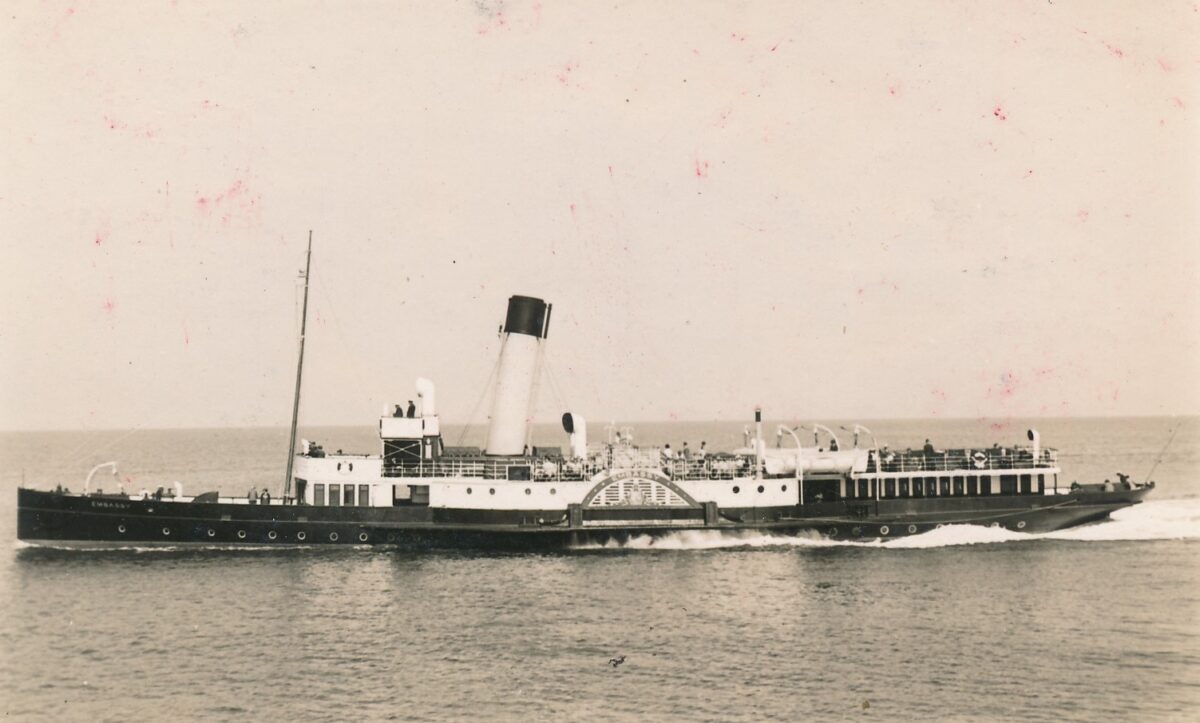
Then Cosens got lucky. In 1937 the Southern Railway built Ryde, their fourth new paddle steamer of the decade for their Portsmouth services, and put up for sale their Duchess of Norfolk which had been built in 1911. This was perfect timing for Cosens who snapped her up and renamed her Embassy primarily to replace Victoria on the long day trips from Weymouth. She could replace Empress on the Lulworth Cove run and she could replace Premier on the Portland run and so release her to be scrapped.

Cosens then had another stroke of luck when Duke of Devonshire, built in 1896, came on the market after her 1937 season running from Torquay. She too was elderly but she had the facility to put her bow on the beach in Lulworth Cove as she had done on the Devon coast in her earlier incarnations. She had a Class III BOT Passenger certificate for longer coastal voyages. And above all, because of her age and condition, she was cheap. So Cosens bought her too and renamed her Consul as a versatile addition to their fleet.
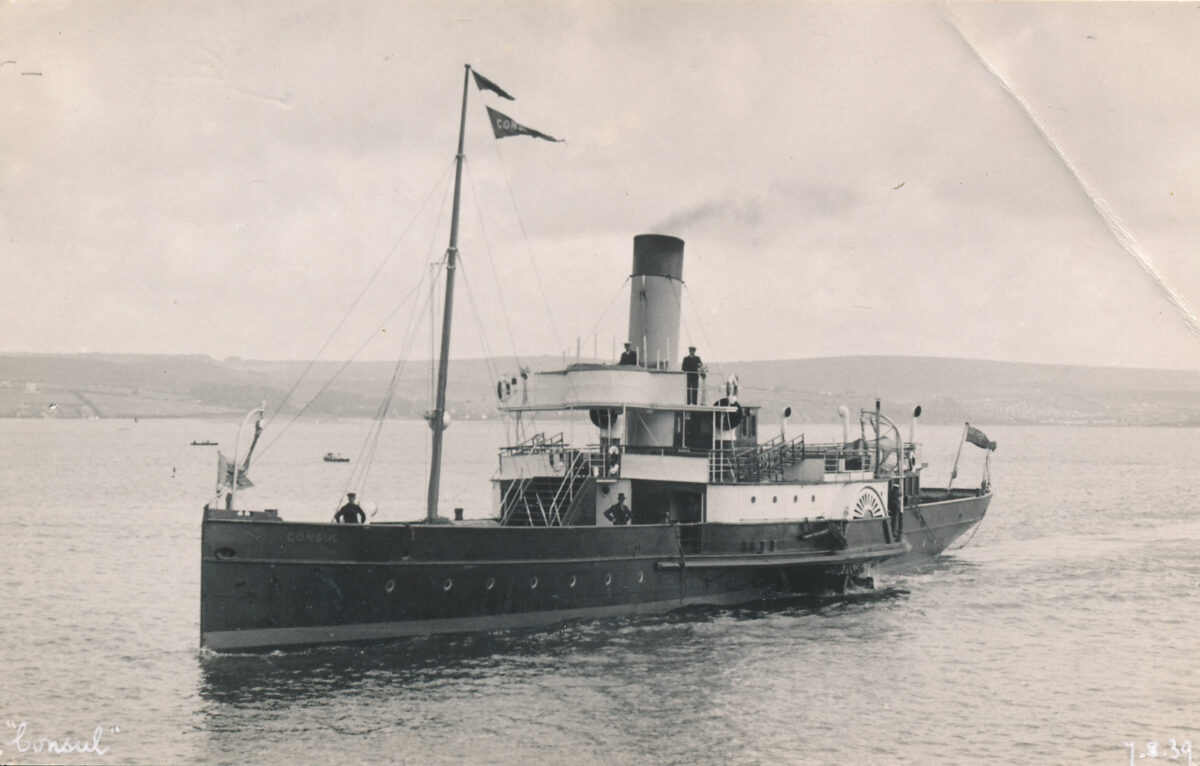
They replaced her funnel in time for the 1938 season and the following winter undertook substantial structural work on both her and Embassy to bring them up to current BOT requirements.
So whilst Cosens’ business model could never fund the building of new paddle steamers the size of Whippingham, Royal Eagle or Jeanie Deans, they did at least buy two second hand paddle steamers at the tail end of decade. One of them, Embassy, was still just about within her design life of 25/30 years and, as it turned out, was destined to become Cosens’ last paddle steamer finally being withdrawn after the 1966 season.
But that lay in the future. For 1934 Cosens fielded Premier, Empress and Victoria from Weymouth. And looking at the steamer notice I have here for that August Bank Holiday week wouldn’t it be wonderful if only some clever person could invent a time machine to take us all back to that summer to stand on the newly rebuilt Pleasure Pier at Weymouth lining up in the queues to join a trip on Premier round Portland Harbour, to cruise along the Dorset Coast to Lulworth Cove on Empress or to sail further afield maybe to Cowes, Torquay or Lyme Regis on Victoria.
I can just smell the hint of coal smoke coming from their funnels, the intoxicating aroma of warm oil emanating from their oscillating steam engines and perhaps the potential promise of a bacon sarnie in the offing wafting up from the galley below.
Tiny Point of Detail:
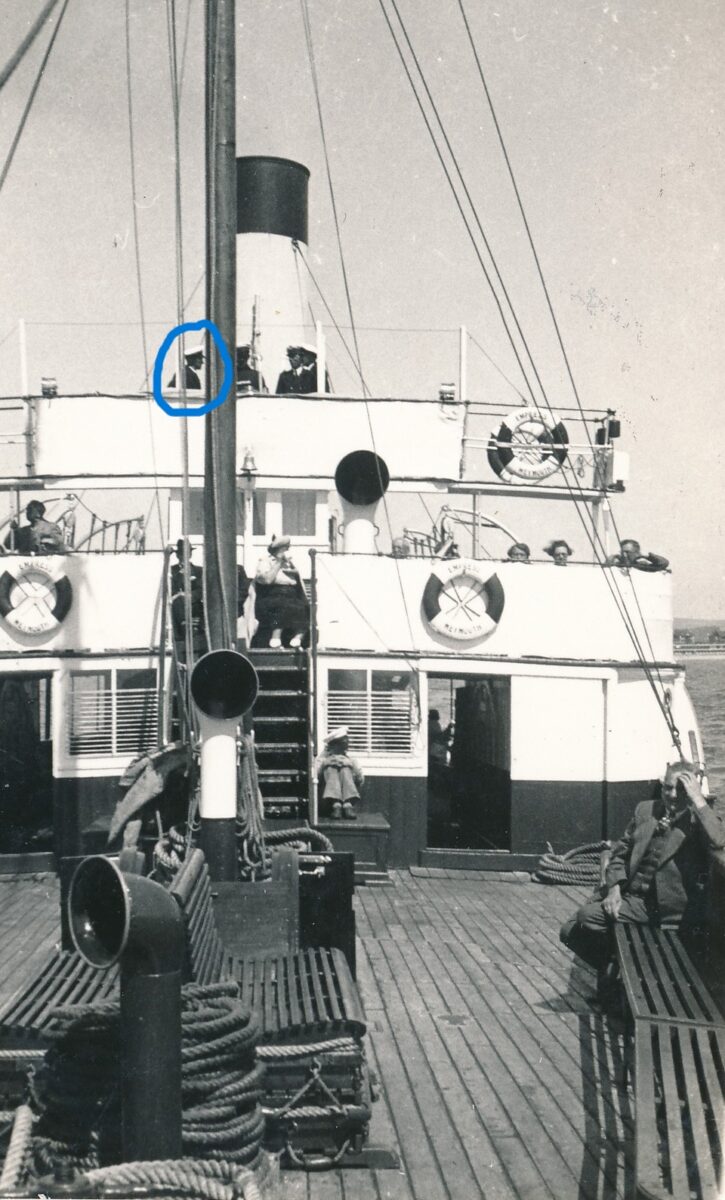
Here is Empress, pictured in July 1949, still going strong for Cosens after the Second World War and on up to 1955, having achieved her own level of fame by playing the part of the cross Channel Packet which runs down Magwitch and Pip in the wonderful 1946 David Lean movie Great Expectations.
Look up on the bridge. There are four crew members there: the captain, mate, man on the wheel and one other supernumerary circled in blue. Who is he? Why was he there? What was he doing? I have had my magnifying glass out and he looks to me very much like Capt Harry Defrates. But why was he there as fourth man on the bridge?
We think that this picture was taken in 1949 because it says so on the back. We know that Capt Defrates joined Cosens sometime around 1947/48 initially as mate of the first twin funnelled Monarch. He had a full Foreign Going Master’s ticket which was potentially very useful to Cosens. We know that he had his first command for Cosens on one occasion as relief master of Embassy in 1948. We know that he had his first permanent command of Victoria in 1951. We know that as mate of Monarch or relief captain of Embassy he would have had no experience of Lulworth Cove as neither ship put their bow on the beach there. Both were considered too big to do that. Also Monarch had a raised forecastle which would have got in the way of the landing gear and Embassy had a bow rudder which might have been damaged in a beach call.
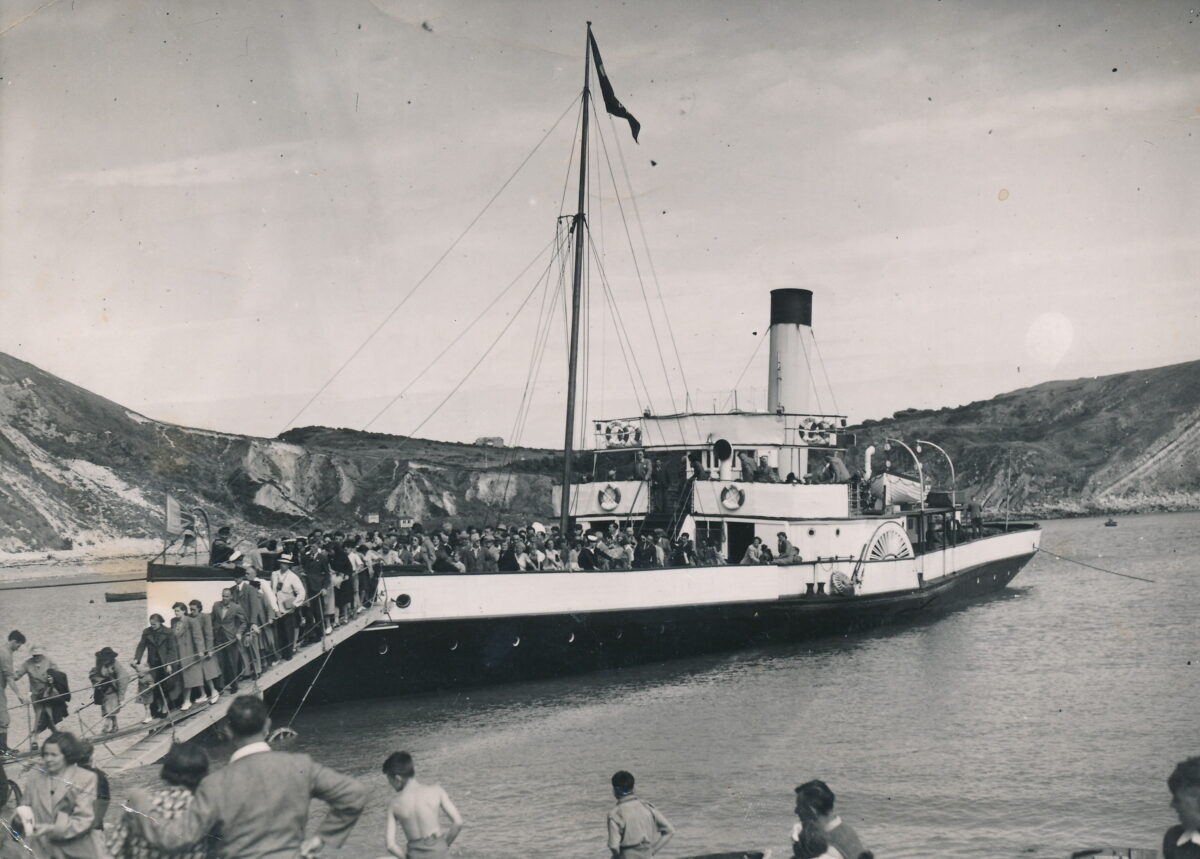
Was he therefore aboard Empress on this day in July 1949 to get in some Lulworth Cove experience and/or get in the necessary trips in readiness to take the examination for the Trinity House Pilotage Certificate for the Weymouth and Portland District so that if required he could step in to take command of Consul, Victoria or Empress on the Lulworth Cove run as well as other members of the fleet elsewhere?
Do you have any thoughts on this? Let me know what you think: jhmocr@gmail.com
Pictures courtesy of the JHM and PSPS Collections
Kingswear Castle returned to service in 2023 after the first part of a major rebuild which is designed to set her up for the next 25 years running on the River Dart. The Paddle Steamer Kingswear Castle Trust is now fund raising for the second phase of the rebuild. You can read more about the rebuilds and how you can help if you can here.
John Megoran


